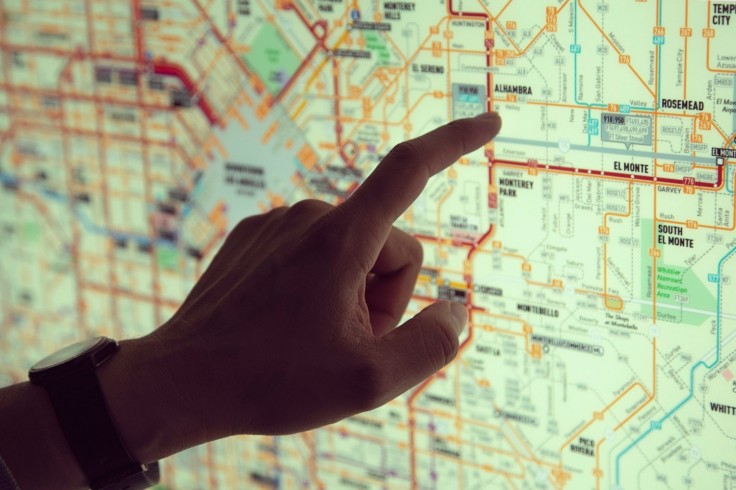
In an era of innovative and rapid technological advancements, geolocation services have become integral to people's daily lives. Whether it is for finding a coffee shop closest to you, navigating you through traffic, or tracking your smartphone, geolocation services play a pivotal role.
However, we've witnessed a significant shift in the industry recently. Modern tech solutions have increasingly migrated away from traditional geolocation providers, opting for alternative technologies and methods to meet their location-based needs.
This article will help you better understand the reasons behind this migration while delving into the merging alternatives that will reshape the geolocation landscape.
The Rise of Geolocation Services
In case you need a rundown on geolocation, geolocation refers to determining the real-world geographic location of a device, user, or object. Because of its many applications, it has been a cornerstone of modern technology.
The proliferation of smartphones, GPS-equipped devices, and the Internet of Things or IoT has fueled the growth of location-based services like Radar. Traditional geolocation providers, primarily Global Positioning Systems or GPS and their network of satellites, have played a dominant role in providing precise location data.
However, this landscape has undergone significant changes in recent years, and several compelling reasons exist for this shift. These reasons include improved precision and accuracy, diverse use cases, accessibility and cost, privacy concerns, and latency and real-time needs.
Improved Accuracy and Precision
One of the primary reasons modern tech solutions migrate away from traditional geolocation providers is the need for better accuracy and precision. New technologies such as crowd-sourced data, advanced sensor technologies, and high-definition or HD mapping have emerged.
These innovations offer superior accuracy and enable tech solutions to pinpoint your location with significantly better precision than traditional GPS. This enhanced accuracy is crucial for applications like your average ride-sharing and delivery services.
Diverse Use Cases
The demand for location data is no longer confined to navigation and map applications. Modern tech solutions utilize geolocation services for various use cases, including augmented reality, indoor navigation, asset tracking, and proximity marketing.
Accessibility and Cost
Traditional GPS often requires a clear line of sight to multiple satellites to provide you with accurate location data. If you are within indoor spaces or an urban environment with tall buildings, GPS signals may significantly degrade, which makes it unreliable for many use cases.
Furthermore, relying on satellite networks can be costly, especially for businesses that require high-frequency location updates. Many modern tech solutions find these limitations and costs prohibitive, driving the shift towards alternatives.
Privacy Concerns
Whether it concerns your private information or confidential business data, privacy has become paramount in the digital age. Traditional geolocation services have been marred by controversies and incidents related to the misuse of location data.
Because of these privacy concerns, user and regulator demand for better privacy protections has increased significantly. That is why modern tech solutions seek alternatives that prioritize user privacy and provide more control over how location data is collected and shared.
Latency and Real-time Needs
In applications with critical real-time location data, such as online gaming, emergency services, and autonomous vehicles, the slightest delay can severely affect your overall experience. Traditional geolocation providers, while reliable, may not offer the low-latency capabilities you may require for these use cases.
As a result, modern alternatives, including edge computing and ultra-wideband or UWB technology, have garnered traction for their ability to provide near-instantaneous location updates.
What are emerging alternatives?
Now that you know why modern tech solutions seek alternatives to traditional geolocation providers, you may want to know what these alternatives are and how they are better. Some of the most prominent rising options could rival traditional geolocation providers like cellular networks and global positioning systems.
Bluetooth and WiFi-based Positioning
Bluetooth and WiFi technologies have become central to your indoor positioning and proximity-based applications. Modern tech solutions can accurately determine your location by leveraging the signals from nearby Bluetooth beacons and WiFi access points, even in challenging indoor environments.
This approach has applications in retail, smart buildings, and location-based marketing.
UWB Technology
Ultra-wideband or UWB technology has gained prominence for its centimeter-level accuracy and low-latency performance. UWB utilizes short-range radio waves to measure the time precisely signals travel between devices, enabling highly accurate location tracking.
It is especially valuable for applications like asset tracking and augmented reality.
LIDAR and Computer Vision
Light Detection and Ranging, or LIDAR technology, and computer vision systems are employed in autonomous vehicles, robotics, and augmented reality applications. These technologies use lasers and cameras to create 3D maps of the environment, enabling accurate localization and obstacle detection.
They are particularly valuable when GPS alone falls short, such as navigating urban canyons or dense forests.
Crowd-sourced Data
Crowd-sourced location data collected from smartphones and IoT devices provides a rich source of location information. Companies like Google and Apple have leveraged this data to improve their location services.
Crowd-sourcing allows for real-time updates, and as the number of connected devices continues to increase, the accuracy and coverage of this data will only improve.
Migration Toward Progression
The migration of modern tech solutions away from traditional geolocation providers results in the pursuit of greater accuracy, adaptability, privacy, and cost-efficiency. Emerging alternatives such as Bluetooth and WiFi-based positioning, UWB technology, LIDAR, and crowd-sourced data are reshaping the geolocation landscape.
As technology continues to scale, the demand for precise and versatile location-based services will persist, and the geolocation industry will continue to adapt to meet these changing needs.









